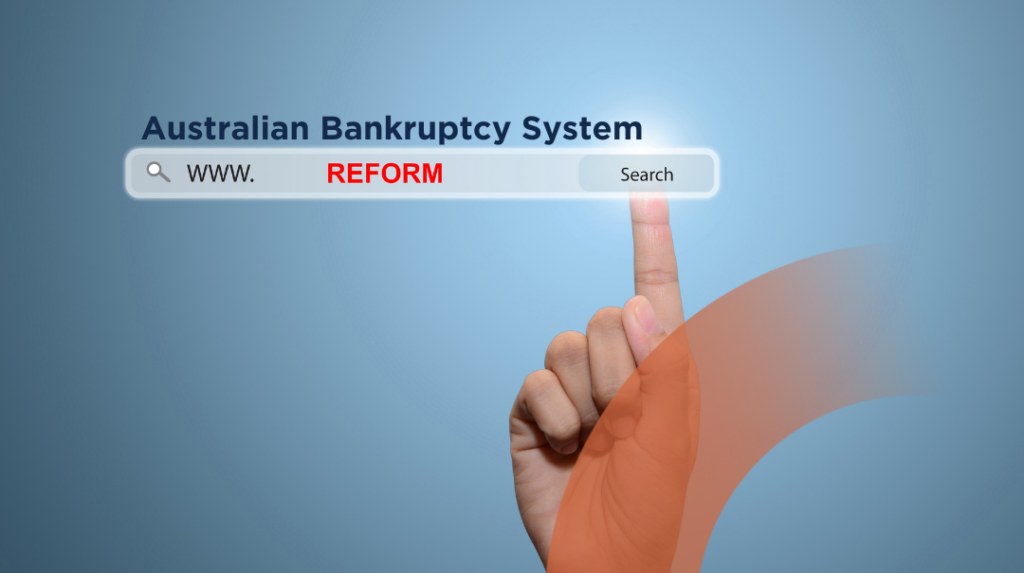On 8 July 2024, off the back of the submission process run by the Attorney Generals Department in relation to personal insolvency, which concluded in September 2023, Mark Dreyfus, announced that the Australian Government is set to introduce a series of significant reforms to the nation’s bankruptcy system.
The stated aim of the changes is to make the personal insolvency system fairer and more balanced, ensuring it operates in the best interests of all Australians. The reforms are designed to address key concerns about fairness and the stigma associated with bankruptcy while also supporting creditors.
Having assisted the Australian Credit Forum and the Australian Institute of Credit Management in crafting their submissions in September 2023, it is interesting to see what has now been announced. Of the reforms announced, all were proposed prior to the commencement of the consultation process.
Below is a summary of the proposed key changes, the governments perceived outcomes and my personal thoughts on the impacts they may have.
- Increased Threshold for Involuntary Bankruptcies
One of the most notable changes is the increase in the threshold for involuntary bankruptcies. The current threshold is set at $10,000, but under the new reforms, it will rise to $20,000. This threshold will also be indexed annually to account for inflation and changing economic conditions. By raising this threshold, the government aims to prevent creditors from initiating bankruptcy proceedings over relatively small debts, thereby reducing the number of cases where bankruptcy might be disproportionate to the financial situation of the debtor.
In my personal view, commercially the increase from $10,000 to $20,000 is a somewhat moot point. The collection and legal costs involved to get to a bankruptcy hearing are generally within the vicinity of $10,000 in a best-case scenario and unless the debtor has personal assets that may be available to discharge these costs, it is not commercial for most creditors to incur those costs for less than a $20,000 debt.
This may be attempting to provide further time to a debtor who has a relatively small debt and who owns real property (usually their home), as the implications for recovering such a relatively small debt are out of proportion to the costs that will be incurred to recover it. The implications on the debtor and their family will be profound. Measures to reduce the likelihood of this occurring are in my view a good policy decision.
- Extended Response Time for Bankruptcy Notices
The timeframe in which a debtor can respond to a bankruptcy notice is being extended from 21 days to 28 days. This change is intended to provide debtors with additional time to seek advice, negotiate with creditors, or arrange their financial affairs before facing bankruptcy proceedings.
In my personal view, the change from 21 days to 28 days won’t really provide any material benefit to a debtor with respect to their ability to negotiate or get their affairs in order. When creditors are considering commencing bankruptcy proceedings, in the majority of circumstances I have been involved in, there has been a significant amount of time provided to the debtor prior to the proceedings being commenced for the debtor to get their affairs in order and/or negotiate with the creditor. This coupled with the delays that are often encountered in the legal enforcement process (hearing dates, availability of the courts), this change is only likely to delay the inevitable.
In my experience, many people in financial distress find it difficult to act or meaningfully engage and it is not until reality bites that they do act.
- Reduced Public Record Duration for Discharged Bankruptcies
Currently, a discharged bankruptcy remains publicly recorded on the National Personal Insolvency Index (NPII) for a period of up to 10 years. The new reforms will reduce this period to seven years following discharge. This change is designed to mitigate the long-term stigma associated with bankruptcy and provide individuals with a more manageable path to rebuilding their financial lives.
In my personal view, this will likely have a beneficial impact on the individual debtor’s personal circumstances in the long term (with respect to increased ability to access credit) with limited downside to creditors given the passage of time.
- Removal of Debt Agreement Proposal as an Act of Bankruptcy
The reforms will also remove the proposal or acceptance of a debt agreement as an act of bankruptcy under subsection 40(1) of the Bankruptcy Act. This adjustment aims to ensure that debt agreements are treated more fairly and do not automatically lead to bankruptcy proceedings. By doing so, the government hopes to encourage more individuals to enter into debt agreements as a viable alternative to bankruptcy.
In my personal view, this, I think this is an area of the reform that will provide the most benefit to debtors and to a lesser extent, creditors. Currently debt agreements have a stigma attached to them which has been created by untrustworthy advisors. Further regulation in this space will assist both creditors and vulnerable debtors to participate in meaningful commercial negotiations which will ultimately likely lead to better outcomes for all.
Introduction of Minimal Asset Procedure (MAP)
In addition to the key changes, the Attorney-General’s Department is commencing consultation on the introduction of a Minimal Asset Procedure (MAP). This procedure is intended to provide an alternative to traditional bankruptcy for individuals with minimal assets who are unable to repay their debts.
The suggested framework being put forward subject to the consultation process so as to take advantage of the MAP is as follows:
- There be a maximum debt threshold of $50,000;
- The process would last for 12 months, with a period of 4 years post-discharge to be listed on the National Personal Insolvency Index;
- Maximum threshold for income would be determined for eligibility;
- Maximum threshold of $10,000 in assets with exceptions for tools of trade and a vehicle;
- A debtor may only enter this process once during their lifetime, and
- The process should be less onerous than a bankruptcy
The government is seeking feedback on the MAP through a public consultation process, which will be open until 29 July 2024.





